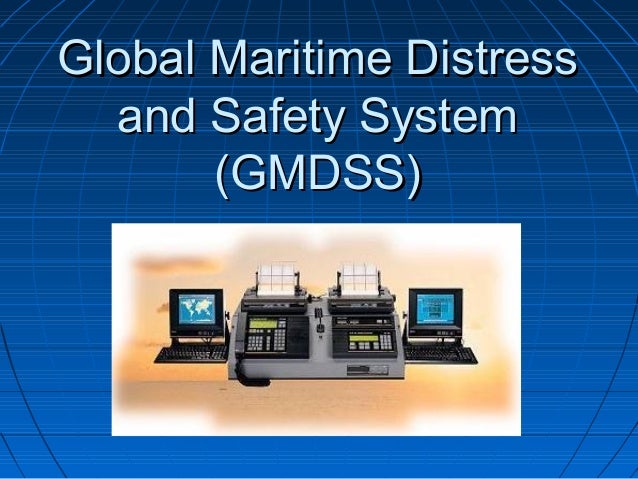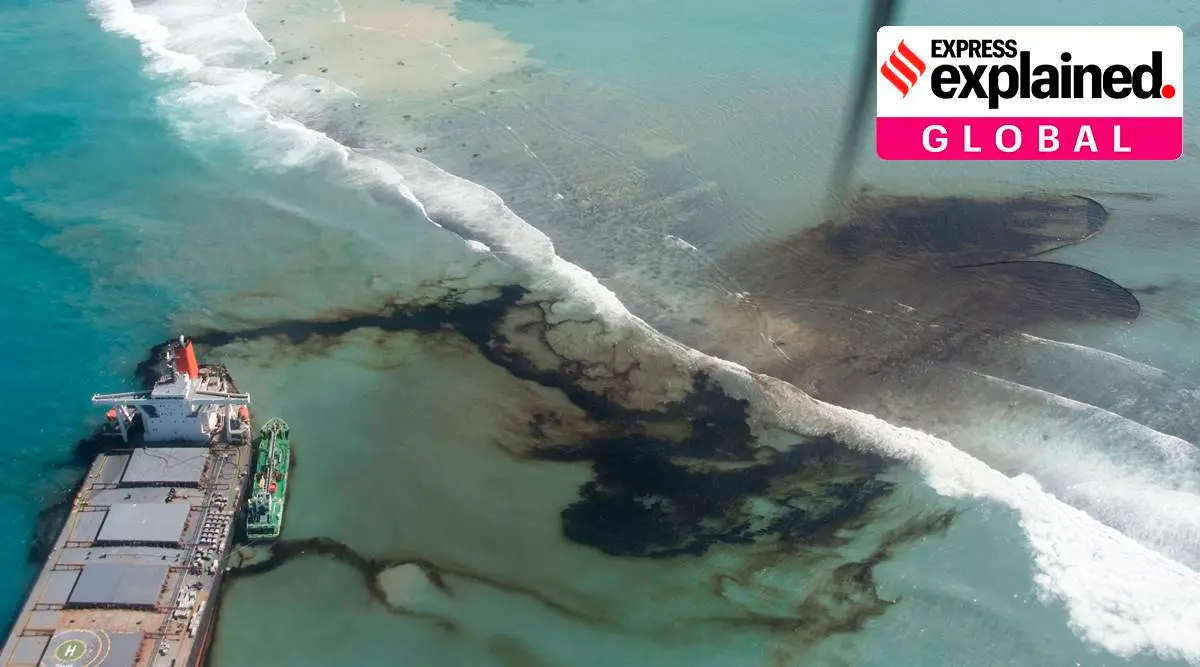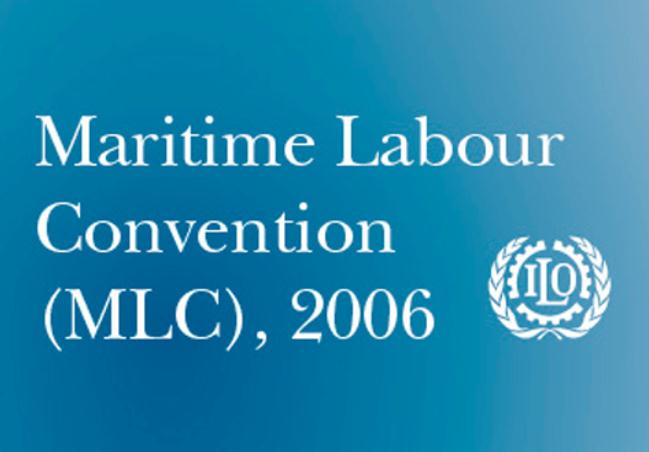Global Maritime Distress and Safety System (GMDSS)

source : google image
The Global Maritime Distress and Safety System (GMDSS) is an internationally agreed-upon set of safety procedures, types of equipment, and communication protocols used to increase safety and make it easier to rescue distressed ships, boats and aircraft.
GMDSS consists of several systems, some of which are new, but many of which have been in operation for many years. The system is intended to perform the following functions: alerting (including position determination of the unit in distress), search and rescue coordination, locating (homing), maritime safety information broadcasts, general communications, and bridge-to-bridge communications. Specific radio carriage requirements depend upon the ship's area of operation, rather than its tonnage. The system also provides redundant means of distress alerting, and emergency sources of power.
Recreational vessels do not need to comply with GMDSS radio carriage requirements, but will increasingly use the Digital Selective Calling (DSC) Marine VHF radios. Offshore vessels may elect to equip themselves further. Vessels under 300 gross tonnage (GT) are not subject to GMDSS requirements.
Safety of Life at Sea (SOLAS)

source : google image
The International Convention for the Safety of Life at Sea (SOLAS) is an international maritime treaty which sets minimum safety standards in the construction, equipment and operation of merchant ships. The convention requires signatory flag states to ensure that ships flagged by them comply with at least these standards.
The current version of SOLAS is the 1974 version, known as SOLAS 1974, which came into force on 25 May 1980. As of November 2018, SOLAS 1974 had 164 contracting states, which flag about 99% of merchant ships around the world in terms of gross tonnage.
SOLAS in its successive forms is generally regarded as the most important of all international treaties concerning the safety of merchant ships.
Chapter I – General Provisions
Surveying the various types of ships and certifying that they meet the requirements of the convention.
Chapter II-1 – Construction – Subdivision and stability, machinery and electrical installations
The subdivision of passenger ships into watertight compartments so that after damage to its hull, a vessel will remain afloat and stable.
Chapter II-2 – Fire protection, fire detection and fire extinction
Fire safety provisions for all ships with detailed measures for passenger ships, cargo ships and tanker.
Chapter III – Life-saving appliances and arrangements
Life-saving appliances and arrangements, including requirements for life boats, rescue boats and life jackets according to type of ship. The specific technical requirements are given in the International Life-Saving Appliance (LSA) Code.
Chapter IV – Radiocommunications
The Global Maritime Distress Safety System (GMDSS) requires passenger and cargo ships on international voyages to carry radio equipment, including satellite Emergency Position Indicating Radio Beacons (EPIRBs) and Search and Rescue Transponders (SARTs).
Chapter V – Safety of navigation
This chapter requires governments to ensure that all vessels are sufficiently and efficiently manned from a safety point of view. It places requirements on all vessels regarding voyage and passage planning, expecting a careful assessment of any proposed voyages by all who put to sea. Every mariner must take account of all potential dangers to navigation, weather forecasts, tidal predictions, the competence of the crew, and all other relevant factors. It also adds an obligation for all vessels' masters to offer assistance to those in distress and controls the use of lifesaving signals with specific requirements regarding danger and distress messages. It is different from the other chapters, which apply to certain classes of commercial shipping, in that these requirements apply to all vessels and their crews, including yachts and private craft, on all voyages and trips including local ones.
Chapter VI – Carriage of Cargoes
Requirements for the stowage and securing of all types of cargo and cargo containers except liquids and gases in bulk.
Chapter VII – Carriage of dangerous goods
Requires the carriage of all kinds of dangerous goods to be in compliance with the International Bulk Chemical Code (IBC Code), The International Code of the Construction and Equipment of Ships Carrying Liquefied Gases in Bulk (IGC Code) and the International Maritime Dangerous Goods Code (IMDG Code).
Chapter VIII – Nuclear ships
Nuclear powered ships are required, particularly concerning radiation hazards, to conform to the Code of Safety for Nuclear Merchant Ships.
Chapter IX – Management for the Safe Operation of Ships
Requires every shipowner and any person or company that has assumed responsibility for a ship to comply with the International Safety Management Code (ISM).
Chapter X – Safety measures for high-speed craft
Makes mandatory the International Code of Safety for High-speed craft (HSC Code).
Chapter XI-1 – Special measures to enhance maritime Safety
Requirements relating to organizations responsible for carrying out surveys and inspections, enhanced surveys, the ship identification number scheme, and operational requirements.
Chapter XI-2 – Special measures to enhance maritime security
Includes the International Ship and Port Facility Security Code (ISPS Code). Confirms that the role of the Master in maintaining the security of the ship is not, and cannot be, constrained by the Company, the charterer or any other person. Port facilities must carry out security assessments and develop, implement and review port facility security plans. Controls the delay, detention, restriction, or expulsion of a ship from a port. Requires that ships must have a ship security alert system, as well as detailing other measures and requirements.
Chapter XII – Additional safety measures for bulk carriers
Specific structural requirements for bulk carriers over 150 metres in length.
Chapter XIII - Verification of compliance
Makes mandatory from 1 January 2016 the IMO Member State Audit Scheme.
Chapter XIV - Safety measures for ships operating in polar waters
The chapter makes mandatory, from 1 January 2017, the Introduction and part I-A of the International Code for Ships Operating in Polar Waters (the Polar Code).
International Convention for the Prevention of Pollution from Ships (MARPOL)
Annex I

MARPOL Annex I came into force on 2 October 1983 and deals with the discharge of oil into the ocean environment. It incorporates the oil discharge criteria prescribed in the 1969 amendments to the 1954 International Convention for the Prevention of Pollution of the Sea by Oil (OILPOL). It specifies tanker design features that are intended to minimize oil discharge into the ocean during ship operations and in case of accidents. It provides regulations with regard to the treatment of engine room bilge water (OWS) for all large commercial vessels and ballast and tank cleaning waste (ODME). It also introduces the concept of "special sea areas (PPSE)" which are considered to be at risk to pollution by oil. Discharge of oil within them has been completely outlawed, with a few minimal exceptions.
The first half of MARPOL Annex I deals with engine room waste. There are various generations of technologies and equipment that have been developed to prevent waste such as: Oily water separators (OWS), Oil Content meters (OCM), and Port Reception Facilities.
The second part of the MARPOL Annex I has more to do with cleaning the cargo areas and tanks. Oil Discharge Monitoring Equipment (ODME) is a very important technology mentioned in MARPOL Annex I that has greatly helped improve sanitation in these areas.
The Oil Record Book is another integral part of MARPOL Annex I. The Oil Record Book helps crew members log and keep track of oily wastewater discharges among other things.
Annex II
MARPOL Annex II came into force on 2 october 1983. It details the discharge criteria for the elimination of pollution by noxious liquid substances carried in large quantities. It divides substances into and introduces detailed operational standards and measures. The discharge of pollutants is allowed only to reception facilities with certain concentrations and conditions. No matter what, no discharge of residues containing pollutants is permitted within 12 nautical miles (22 kilometres) of the nearest land. Stricter restrictions apply to "special areas".
Annex II covers the International Bulk Chemical Code (IBC Code) in conjunction with Chapter 7 of the SOLAS Convention. Previously, chemical tankers constructed before 1 July 1986 must comply with the requirements of the Code for the Construction and Equipment of Ships Carrying Dangerous Chemicals in Bulk (BCH Code).
Annex III

MARPOL Annex III came into force on 1 July 1992. It contains general requirements for the standards on packing, marking, labeling, documentation, stowage, quantity subtraction, division and notifications for preventing pollution by harmful substances. The Annex is in line with the procedures detailed in the International Maritime Dangerous Goods (IMDG) Code, which has been expanded to include marine pollutants. The amendments entered into force on 1 January 1991.
Annex IV

Marpol Annex IV came into force on 27 September 2003. It introduces requirements to control pollution of the sea by sewage from ships.
Annex V

MARPOL Annex V (Regulations for the Prevention of Pollution by Garbage from Ships) came into force on 31 December 1988. It specifies the distances from land in which materials may be disposed of and subdivides different types of garbage and marine debris. The requirements are much stricter in a number of "special areas" but perhaps the most prominent part of the Annex is the complete ban of dumping plastic into the ocean.
Annex VI
MARPOL Annex VI came into force on 19 May 2005. It introduces requirements to regulate the air pollution being emitted by ships, including the emission of ozone-depleting substances, Nitrogen Oxides (NOx), Sulphur Oxides (SOx), Volatile Organic Compounds (VOCs) and shipboard incineration. It also establishes requirements for reception facilities for wastes from exhaust gas cleaning systems, incinerators, fuel oil quality, for off-shore platforms and drilling rigs and for the establishment of SOx Emission Control Areas (SECAs).
STCW

source : google image
International Convention on Standards of Training, Certification and Watchkeeping for Seafarers (STCW), 1978 sets minimum qualification standards for masters, officers and watch personnel on seagoing merchant ships and large yachts. STCW was adopted in 1978 by conference at the International Maritime Organization (IMO) in London, and entered into force in 1984. The Convention was significantly amended in 1995.
The 1978 STCW Convention was the first to establish minimum basic requirements on training, certification and watchkeeping for seafarers on an international level. Previously the minimum standards of training, certification and watchkeeping of officers and ratings were established by individual governments, usually without reference to practices in other countries. As a result, minimum standards and procedures varied widely, even though shipping is extremely international by nature.
The Convention prescribes minimum standards relating to training, certification and watchkeeping for seafarers which countries are obliged to meet or exceed.
The Convention did not deal with manning levels: IMO provisions in this area are covered by regulation 14 of Chapter V of the International Convention for the Safety of Life at Sea (SOLAS), 1974, whose requirements are backed up by resolution A.890(21) Principles of safe manning[4], adopted by the IMO Assembly in 1999, which replaced an earlier resolution A.481(XII) adopted in 1981 and has since been itself replaced by resolution A.1047(27) Principles of Minimum Safe Manning, adopted by the IMO Assembly in 2011.
One especially important feature of the Convention is that it applies to ships of non-party States when visiting ports of States which are Parties to the Convention. Article X requires Parties to apply the control measures to ships of all flags to the extent necessary to ensure that no more favourable treatment is given to ships entitled to fly the flag of a State which is not a Party than is given to ships entitled to fly the flag of a State that is a Party.
The difficulties which could arise for ships of States which are not Parties to the Convention is one reason why the Convention has received such wide acceptance. By 2018, the STCW Convention had 164 Parties, representing 99.2 per cent of world shipping tonnage.
MARITIME LABOUR CONVENTION (MLC)

source : google image
The Maritime Labour Convention (MLC) is an International Labour Organization convention, number 186, established in 2006 as the fourth pillar of international maritime law and embodies "all up-to-date standards of existing international maritime labour Conventions and Recommendations, as well as the fundamental principles to be found in other international labour Conventions". The other "pillars are the SOLAS, STCW and MARPOL. The treaties applies to all ships entering the harbours of parties to the treaty (port states), as well as to all states flying the flag of state party (flag states, as of 2019: over 90 per cent).
The convention entered into force on 20 August 2013, one year after registering 30 ratifications of countries representing over 33 per cent of the world gross tonnage of ships. Already after five ratifications the ratifying countries (Bahamas, Norway, Liberia, Marshall Islands, and Panama) represented over 43 per cent of the gross world tonnage (which is over 33 per cent; the second requirement for entry into force). As of September 2019, the convention has been ratified by 97 states representing over 91 per cent of global shipping.
Although the Convention has not been ratified worldwide, it has widespread effect because vessels from non-signatory states that attempt to enter ports of signatory states may face arrest and penalties for non-compliance with the MLC.
Content and Organization
The convention consists of the sixteen articles containing general provisions as well as the Code. The Code consists of five Titles in which specific provisions are grouped by standard (or in Title 5: mode of enforcement):
Title 1: Minimum requirements for seafarers to work on a ship
Title 2: Conditions of employment
Title 3: Accommodation, recreational facilities, food and catering
Title 4: Health protection, medical care, welfare and social security protection
Title 5: Compliance and enforcement
For Each Title, there are general Regulations, which are further specified in mandatory Standards (list A) as well as Guidelines (List B). Guidelines generally form a form of implementation of a Regulation according to the requirements, but States are free to have different implementation measures. Regulations and Standards should in principle be implemented fully, but a country can implement a "substantially equivalent" regulation, which it should declare upon ratification.
Some seafarers criticize the convention, saying that it lacks teeth, does not address real issues, and skirts important seafarer needs such as decent sized cabins, cupboards in cabins, shore leave, and rest hours by including them into Guidelines (List B) of the convention—or worse, by not addressing them at all.
Comments
Post a Comment